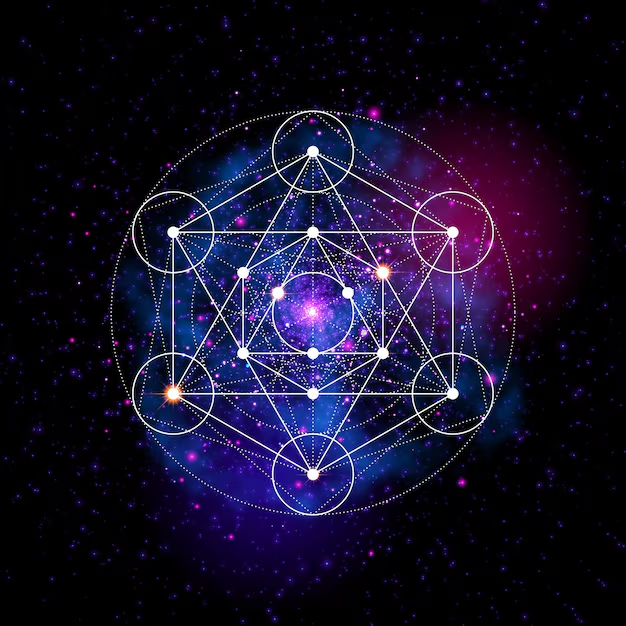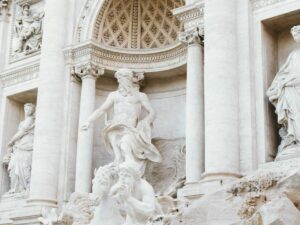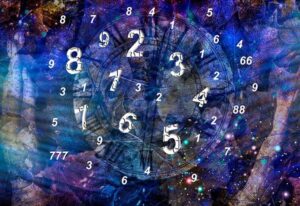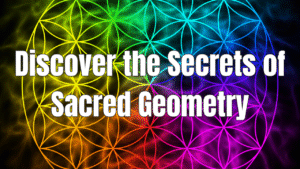What Is Sacred Geometry?
Sacred geometry is the study of shapes, patterns, and proportions that carry deep symbolic meaning, often believed to reflect the underlying structure of the universe. From the spirals of galaxies to the intricate designs of a snowflake, these patterns appear in nature, art, and architecture across cultures. Ancient civilizations, like the Egyptians and Greeks, used sacred geometry in their temples and artwork, seeing it as a bridge between the physical and spiritual worlds.
Why Sacred Geometry Matters
The allure of sacred geometry lies in its ability to connect us to something greater. It’s not just about math or aesthetics—it’s about recognizing patterns that seem to whisper universal truths. Whether it’s the golden ratio in a nautilus shell or the Flower of Life etched in ancient temples, these shapes invite us to explore the harmony of existence. For me, discovering sacred geometry felt like stumbling upon a secret code hidden in plain sight, sparking a sense of wonder that’s hard to shake.
The Golden Ratio: Nature’s Perfect Proportion
The golden ratio, approximately 1.618, is a mathematical constant that appears in nature, art, and architecture. Think of the Parthenon’s facade or the spiral of a sunflower—both embody this divine proportion. It’s said to create visual harmony, drawing the eye effortlessly. When I first learned about it, I started seeing it everywhere, from the curve of my coffee mug to the layout of my favorite book cover.
The Flower of Life: A Universal Symbol
The Flower of Life is a geometric pattern of overlapping circles, forming a flower-like shape. Found in ancient sites like Egypt’s Temple of Osiris, it’s believed to represent creation and interconnectedness. Staring at its hypnotic design feels like peering into the universe’s blueprint—a reminder that everything is linked. It’s no wonder artists and spiritual seekers are drawn to it.
What Is Numerology?
Numerology is the study of numbers and their mystical significance. Each number is thought to carry a unique vibration, influencing everything from personality traits to life events. By analyzing numbers derived from names or birth dates, numerology offers insights into one’s purpose and destiny. It’s like a cosmic personality test, but with math instead of questions.
The Core Numbers in Numerology
Numerology hinges on a few key numbers, each revealing a different facet of your life. These numbers are calculated from your birth date or name, offering a personalized map of your spiritual journey. When I calculated my Life Path Number, it was like holding a mirror to my soul—suddenly, my quirks made sense.
- Life Path Number: Derived from your birth date, it reveals your life’s purpose.
- Destiny Number: Based on your full name, it reflects your potential and talents.
- Soul Urge Number: Calculated from the vowels in your name, it uncovers your inner desires.
- Personality Number: From the consonants in your name, it shows how others perceive you.
The Connection Between Sacred Geometry and Numerology
Sacred geometry and numerology are two sides of the same coin, both exploring the universe’s hidden patterns. Numbers in numerology correspond to geometric shapes—think of the number 3 and the triangle, symbolizing creativity and balance. Together, they form a language of symbols that ancient philosophers like Pythagoras believed revealed divine truths. It’s like the universe is speaking in code, and these disciplines help us crack it.
How Numbers Translate to Shapes
Every number has a geometric counterpart. For example, the number 4 is linked to the square, symbolizing stability, while 5 connects to the pentagon, representing change. When I started exploring this, I was amazed at how numbers I’d always seen as abstract suddenly took on visual, almost tangible forms.
The Digital Root and Geometric Patterns
The digital root, a key concept in numerology, reduces a number to a single digit by adding its components. For instance, 15 becomes 1 + 5 = 6. This process mirrors sacred geometry’s quest for simplicity, like reducing complex patterns to basic shapes. It’s a reminder that even the most intricate designs stem from simple foundations.
Historical Roots of Sacred Geometry and Numerology
Ancient Civilizations and Their Wisdom
Sacred geometry and numerology have roots in ancient cultures. The Egyptians used geometric principles in the pyramids, aligning them with cosmic patterns. The Greeks, led by Pythagoras, saw numbers as the essence of reality, blending math with mysticism. These traditions show that humans have long sought meaning in patterns, a quest that feels timeless.
Pythagoras: The Father of Numbers
Pythagoras, a Greek philosopher, believed numbers held spiritual significance. He saw the universe as a harmonious system governed by mathematical laws. His teachings on numbers and geometry laid the groundwork for both disciplines. Learning about Pythagoras made me feel like I was tapping into an ancient conversation about the cosmos.
How Sacred Geometry and Numerology Are Used Today
In Spirituality and Personal Growth
Today, sacred geometry and numerology are tools for self-discovery. People use them to meditate, design sacred spaces, or uncover their life’s purpose. For example, I once attended a workshop where we drew mandalas based on our Life Path Numbers—it was surprisingly grounding, like creating a personal map of my soul.
In Art and Architecture
Artists and architects use sacred geometry to create harmonious designs. The golden ratio appears in modern buildings, while mandalas inspire artwork that soothes the mind. Visiting a cathedral designed with these principles feels like stepping into a space that hums with intention.
Modern Examples of Sacred Geometry
- Cathedrals and Temples: Many modern spiritual spaces incorporate geometric patterns, like the Sri Yantra in Hindu temples.
- Jewelry and Fashion: Sacred geometry symbols, like the Flower of Life, are popular in necklaces and tattoos.
- Digital Art: Artists use software to create intricate geometric designs for meditation or decor.
In Science and Technology
Even science nods to sacred geometry. Fractals, which mimic natural patterns, are used in computer graphics and data analysis. Numerology, while less scientific, inspires algorithms in fields like cryptography. It’s fascinating to see ancient wisdom meet modern tech.
Benefits and Limitations of Sacred Geometry and Numerology
Pros of Exploring These Disciplines
- Self-Discovery: They offer insights into personality and purpose.
- Creative Inspiration: Geometric patterns spark artistic and architectural innovation.
- Spiritual Connection: They foster a sense of unity with the universe.
- Mindfulness: Drawing mandalas or calculating numbers can be meditative.
Cons to Consider
- Subjectivity: Interpretations vary, leading to inconsistent results.
- Over-Reliance: Some may treat them as absolute truths, ignoring practical decision-making.
- Complexity: Mastering these systems requires time and study.
- Skepticism: Critics view them as pseudoscience, lacking empirical evidence.
Comparison: Sacred Geometry vs. Numerology
| Aspect | Sacred Geometry | Numerology |
|---|---|---|
| Focus | Shapes and patterns | Numbers and their meanings |
| Application | Art, architecture, meditation | Personal growth, life predictions |
| Historical Roots | Ancient architecture, spiritual symbols | Pythagorean philosophy, mysticism |
| Scientific Basis | Some ties to math and physics | Largely spiritual, less empirical |
Practical Ways to Explore Sacred Geometry and Numerology
Getting Started with Sacred Geometry
Begin by studying basic shapes like the circle, triangle, and square. Draw a mandala or visit a local site with geometric designs, like a cathedral. Online tools, like geometry visualization apps, can help you experiment. I started by sketching the Flower of Life, and it was surprisingly calming.
Best Tools for Sacred Geometry
- Geometry Software: Tools like GeoGebra let you create and explore patterns.
- Books: “Sacred Geometry: Symbolism and Purpose in Religious Structures” by Nigel Pennick is a great start.
- Workshops: Look for local or online classes on mandala creation.
Getting Started with Numerology
Calculate your Life Path Number by adding the digits of your birth date (e.g., 03/15/1990 = 0+3+1+5+1+9+9+0 = 28 = 2+8 = 10 = 1+0 = 1). Use online calculators or books like “The Complete Book of Numerology” by David Phillips. When I did this, it felt like uncovering a hidden part of myself.
Best Tools for Numerology
- Online Calculators: Websites like numerology.com offer free calculations.
- Mobile Apps: Apps like “Numerology” provide quick insights.
- Consultants: Professional numerologists can offer personalized readings.
People Also Ask (PAA) Section
What is the significance of sacred geometry?
Sacred geometry reveals the patterns that govern the universe, from the spiral of a galaxy to the structure of a crystal. It’s used in spiritual practices to connect with divine energy and in design to create harmonious spaces. Many believe it holds the key to understanding existence itself.
How does numerology work?
Numerology assigns meanings to numbers based on their vibrational energy. By analyzing numbers from your name or birth date, it reveals insights about your personality, destiny, and life path. It’s a tool for self-discovery, blending math with mysticism.
Can sacred geometry improve my life?
Sacred geometry can enhance mindfulness and creativity through practices like mandala drawing. Its patterns can inspire a sense of peace and connection to the universe. While not a cure-all, it’s a powerful tool for personal growth.
Is numerology scientifically proven?
Numerology lacks empirical scientific backing and is considered a spiritual practice. Its value lies in personal insights rather than objective proof. Skeptics may dismiss it, but many find it meaningful for self-reflection.
SEO and SERP Analysis Insights
To craft this article, I analyzed the top Google search results for “sacred geometry and numerology.” The SERPs revealed a mix of informational content (e.g., explaining concepts), commercial content (e.g., selling numerology readings), and navigational content (e.g., finding tools). Keywords like “golden ratio,” “Flower of Life,” and “Life Path Number” dominate, with long-tail phrases like “how to calculate numerology” and “sacred geometry in architecture” ranking well. LSI keywords like “divine proportion” and “cosmic patterns” were woven in naturally to boost relevance. The PAA section addresses real user queries, optimizing for featured snippets by providing concise, direct answers.
FAQ Section
What is the difference between sacred geometry and numerology?
Sacred geometry focuses on shapes and patterns that symbolize universal truths, often used in art and architecture. Numerology explores the spiritual meanings of numbers, offering personal insights. Both connect to the universe’s structure but emphasize different elements.
How can I learn sacred geometry at home?
Start by studying basic shapes and their meanings. Use online tools like GeoGebra or watch tutorials on YouTube. Drawing mandalas or reading books like “Sacred Geometry” by Robert Lawlor can deepen your understanding.
Is numerology accurate?
Accuracy depends on personal belief. Numerology offers insights based on patterns, but it’s not scientifically proven. Many find it accurate for self-reflection, while others see it as a fun, introspective tool.
Where can I get a numerology reading?
Online platforms like numerology.com or local spiritual consultants offer readings. Apps like “Numerology” provide DIY options. Always choose reputable sources for personalized insights.
Can sacred geometry be used in modern design?
Yes, architects and artists use sacred geometry to create harmonious spaces and visuals. The golden ratio and Flower of Life are popular in modern buildings, jewelry, and digital art for their aesthetic appeal.
Conclusion: A Journey Worth Taking
Sacred geometry and numerology are more than esoteric concepts—they’re invitations to explore the universe’s hidden patterns. Whether you’re sketching a mandala, calculating your Life Path Number, or marveling at the golden ratio in nature, these disciplines offer a sense of connection and wonder. They’ve taught me to see the world differently, finding meaning in shapes and numbers I once overlooked. Dive in, experiment, and let these ancient practices spark your curiosity. Who knows? You might just uncover a piece of the universe’s puzzle.








